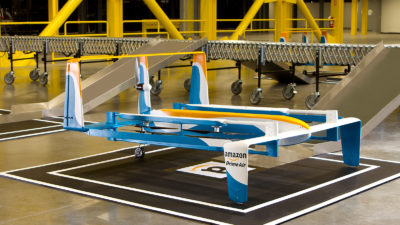Boom’s demonstrator took flight, NASA continued X-59 preparations
By Darcy L. Allison and Lori Ozoroski|December 2024
The Supersonics Integration Committee promotes a community of practice engaged in the technical, business, environmental and societal issues associated with supersonic transports and the research needs of this emergent capability.
Boom Supersonic of Colorado continued toward its goal of reviving supersonic passenger travel. In March, the company’s XB-1 demonstrator completed its first flight, a subsonic mission. “Two decades after Concorde’s retirement, the first flight of XB-1 marks the return of a civil supersonic aircraft to the skies and paves the way for the revival of mainstream supersonic travel,” Boom said in a press release. The flights are to help validate the design of Boom’s planned Mach 1.7 airliner, Overture, “while establishing a safety-first culture in engineering and manufacturing.” In June, Boom held a ribbon-cutting ceremony at the Overture Superfactory to celebrate the completion of this facility at the Piedmont Triad International Airport in North Carolina. In July, at the Farnborough International Airshow in the U.K., Boom announced an all-new Overture flight deck that incorporates Honeywell’s Anthem avionics suite, a head-worn vision system from Universal Avionics and Active Control Sidesticks from BAE Systems. Boom also described the progress on the Symphony engines that will power the Overtures and announced that the engines “will be assembled in San Antonio, Texas through an expanded agreement with StandardAero.”
In January, NASA publicly unveiled its X-59 demonstrator at Lockheed Martin’s Skunk Works facility in California. As of October, integrated testing had begun, and the first engine runs were completed. Also in January, NASA completed a field test of the initial production versions of the high-fidelity microphones and other equipment that will measure X-59’s sonic “thump” during the planned flights over select U.S. communities. Following this test, Crystal Instruments of California delivered the 70 units that will be used in the X-59 acoustic validation. A dry run of all the measurement techniques is planned for early 2025.
In November, a team led by the University of Washington — with Stanford University, the University of Michigan and Boeing — concluded a five-year study on the applied aerodynamics and stability and control of commercial supersonic transports in the low-speed regime. Their Supersonic Configurations at Low Speeds project, funded by NASA, included experimental and computational components. Researchers acquired some 1,000 data runs during 10 unique wind and water tunnel entries. This information now resides in a database meant to aid in future trade studies of supersonic airliner concepts, including their long, slender noses, upper mounted nacelles and three-surface control designs — unique features derived from low-boom shaping.
In February, NASA’s exploration of commercial vehicles in the Mach 2-5 speed regime partially concluded with the delivery of final designs and analysis from the Northrop Grumman contract team. Though emerging landing and takeoff noise regulations and emissions remained a challenge, the team created a Mach 2 concept that satisfied the desired market range and passenger count identified in precursor studies, performed for NASA by SpaceWorks Engineering Inc. of Georgia. Northrop Grumman’s concept for a Mach 3 vehicle required significantly more technologies embodied in a more radical configuration to satisfy these regulations, even at reduced range and passenger count. Also for this project, the Boeing team is on track to complete its Mach 4 vehicle concepts and technology road map by the end of the year. In their entirety, these studies are informing NASA’s technical direction addressing the utility of high-speed flight.
In June, NASA completed the Landing and Takeoff Noise Prediction Uncertainty Reduction, a multi-year technical challenge. Researchers created empirical noise models tuned to predict the airport noise of near-term commercial supersonic aircraft. Through this effort, prediction uncertainty levels were reduced significantly and approached those for traditional subsonic aircraft. The new models will be made publicly available via NASA’s Technical Report Server.
Contributors: James Bridges, Peter Coen, Sarah Langston, Sahil Patel and Jon Seidel


































